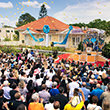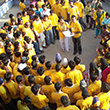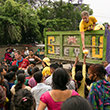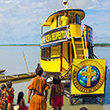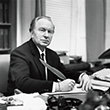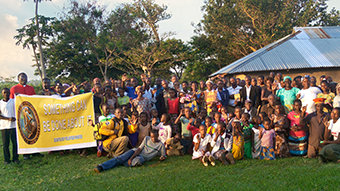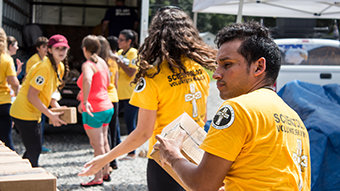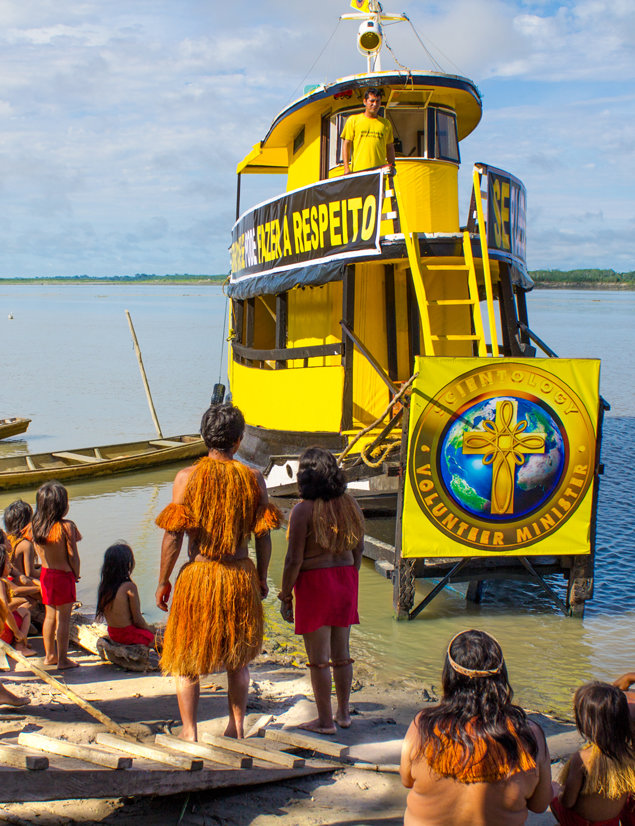
The Amazon is a 4,400-mile river whose 2.6 million-square-mile basin covers eight countries, making it one of the most thrilling of travel destinations. But for Daniel González, the Amazon isn’t just about adventure. It’s also a chance to help marginalized communities along the river that are among the neediest on the planet.
González is the director of the Amazon Extreme Tour, one of three humanitarian journeys that members of the Scientology Volunteer Ministers Program have been undertaking to remote areas of the world for the past nine years. (Other “extreme” destinations include North Africa and the Australian Outback.)
A native of Mexico City, González first visited the Amazon as a VM in 2007. He has been returning to the region regularly. Over the past eight months, he has taken boats and walked on foot while leading a team of 15 VMs through an area known as “Three Borders,” formed by the junction of Brazil, Colombia and Peru. There, in the heart of the Amazon, he and his colleagues revisited eight indigenous communities.
“For me, to help people who never receive help and reach the most unreachable parts of the world is more than an adventure—it is a life experience that forces you to reflect on the need to help others,” González said. “All people must gain awareness of the fact that, no matter what happens, as our motto states, something can be done about it.”
González and his VM colleagues voyage across the Amazon in a “Volunteer Ministers Boat,” well known in the area and recognized by indigenous community members as the “yellow boat goodwill”—a reference to the characteristic, eye-catching color of the T-shirts that VMs wear, and the tents they pitch for public gatherings while providing VM solutions.
As González and his team members have done during past visits, they held seminars on study, and answers to drugs—two of the 19 topics covered in The Scientology Handbook, a manual based on the teachings of Scientology founder L. Ron Hubbard. (See the overview of the handbook.)
The abuse of drugs and alcohol, together with domestic violence, is rampant among indigenous people in many parts of the Amazon, González explained. In fact, it’s “the single-most dangerous factor threatening to tear apart their way of life.” He added: “I have met with little boys and girls who tell me about how their parents beat them up when they are under the influence of alcohol.”
For people who can barely eke out a living, it’s heart-rending to watch them struggle with the ravages of drugs and alcohol, González pointed out. “It was a punch in my face—a wake-up call for the team,” he said. “We could see that we were the only ones who could even remotely do something for their situation.”
González’s latest trip to the Amazon began in September 2015 in Leticia, a major port of the Amazon River located in Colombia and the capital of the nation’s Department of Amazonas.
Because the VMs had never before toured the Colombian town, they did what they always do when they arrive at a new site: Before attempting to contact people in their homes, the VMs met with community leaders, government officials and police. The group’s first meeting in Leticia was with Augusto Falcon Perez, director of the Association of Indigenous Councils of Amazonian Trapezium, a well-respected leader of more than 40 indigenous communities in the area.

“He had an impressive presence,” González said, adding that the leader’s concern for the needs of his people was evident by the way he spoke about them. “Yet when we first approached him, he was curt,” González said. “We found that this was because of his huge responsibility in ensuring that no outsider takes advantage of or harms the indigenous communities.”
But after interacting with his visitors and hearing about their mission, Perez permitted the VMs to meet directly with each shaman (spiritual leader and healer) of the 40-plus communities he was in charge of. In effect, Perez not only welcomed the VMs but gave them its members a virtual “carte blanche—a big open door to help communities, something unheard of in the area,” González said. “We felt honored.”
The VMs went about setting up their tents next to the so-called “Holy House,” a kind of temple where only males are permitted to enter. The VMs then delivered seminars, courses and assists that helped 1,464 people, according to González.
One of the most memorable moments of the Amazon Extreme Tour occurred in Manacapuru, a town in Brazil where González and his colleagues were delivering technology at a community center that specializes in helping homeless people.
At the community center, one of the VMs delivered an “assist” (a procedure which helps a person deal with trauma) to a jobless, middle-aged man addicted to alcohol. “What happened after the assist can only be described as a miracle,” González said, adding, “Three days after the assist we found him in the street, clean, well-groomed, and he stopped us, with tears in his eyes and thanked us.”
After the assist, the man told the VMs, “Something happened in him, and suddenly he started to see things in a clearer, positive way,” González said. The man even had a job. “This was a very emotional moment because we help hundreds of people but not always do we know the end results as we move from one area to another.”


